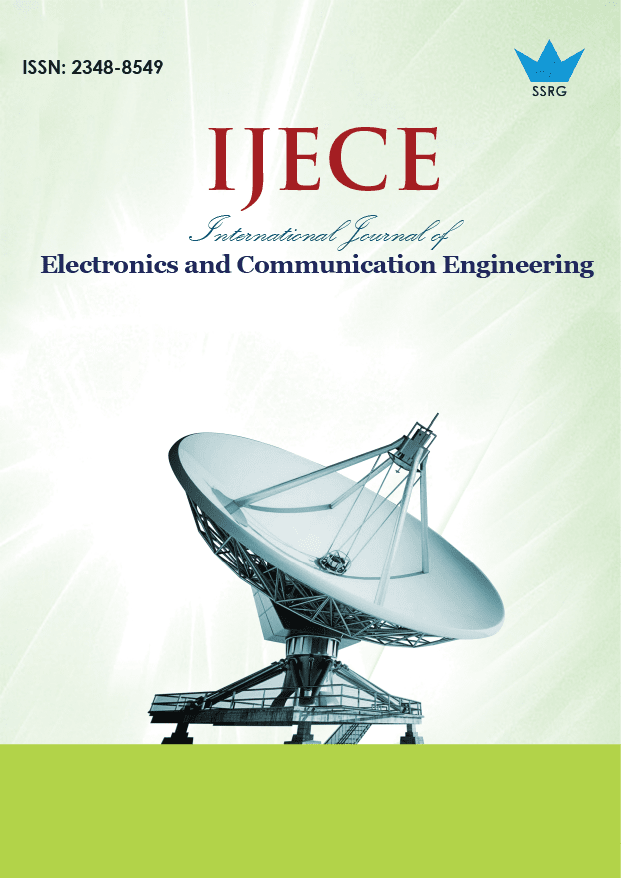Fine-Tuning and Performance Optimization of a Hybrid Load Balancing Algorithm for Efficient Cloud Computing in a Python-Based Simulation

| International Journal of Electronics and Communication Engineering |
| © 2025 by SSRG - IJECE Journal |
| Volume 12 Issue 6 |
| Year of Publication : 2025 |
| Authors : F. Niyasudeen, M. Mohan |
How to Cite?
F. Niyasudeen, M. Mohan, "Fine-Tuning and Performance Optimization of a Hybrid Load Balancing Algorithm for Efficient Cloud Computing in a Python-Based Simulation," SSRG International Journal of Electronics and Communication Engineering, vol. 12, no. 6, pp. 206-214, 2025. Crossref, https://doi.org/10.14445/23488549/IJECE-V12I6P116
Abstract:
Cloud computing environments require efficient load-balancing mechanisms to prevent bottlenecks, maximize resource utilization, and ensure optimal system performance. While Hybrid Load Balancing Algorithms (HLBA) have superior adaptability compared to existing methods, the effectiveness of these algorithms depends on the fine-tuning of parameters such as load thresholds, balancing approaches, and decision-making models. This study focuses on HLBA optimization by analyzing and adjusting these parameters within the Python-based cloud simulation. The proposed fine-tuning process minimizes response time, increases throughput, and improves server utilization by involving adaptive threshold adjustments, decision-tree optimization, and heuristic-driven enhancements. The results are shown below with different simulated cloud workload environments, assessing the control of parameter tuning on system performance. The comparative analysis with traditional and baseline HLBA implementations confirms that parameter-optimized HLBA achieves a 20–30% development in efficiency. The outcomes provide valuable insights into dynamic parameter tuning for real-time cloud load balancing, paving the way for future AI-driven autonomous load-balancing frameworks.
Keywords:
Adaptive load distribution, Hybrid load balancing, Cloud computing, Optimization, Python simulation.
References:
[1] M. Rohit Kapoor, “Optimizing Performance and Efficiency: Load Balancing’s Function in the Contemporary Cloud,” E-Sarthi, vol. 18, no. 1, pp. 131-141, 2024.
[Google Scholar] [Publisher Link]
[2] Omer K. Jasim Mohammad, “New Keys for Cloud Resource Provisioning Optimization Method in Multi-Tier Style,” Journal of Intelligent Systems and Internet of Things, vol. 15, no. 1, pp. 175-184, 2025.
[CrossRef] [Google Scholar] [Publisher Link]
[3] Arooj Basharat, and Zillay Huma, “Scaling Deep Learning Models for High-Performance Computing Environments,” ResearchGate, pp. 1-7, 2024.
[Google Scholar]
[4] Mallu Shiva Rama Krishna, and D. Khasim Vali, “Meta-RHDC: Meta Reinforcement Learning Driven Hybrid Lyrebird Falcon Optimization for Dynamic Load Balancing in Cloud Computing,” IEEE Access, vol. 13, pp. 36550-36574, 2025.
[CrossRef] [Google Scholar] [Publisher Link]
[5] Junjie Cao et al., “Server Deployment Strategies Considering Robustness and Resource Constraints in Edge Computing,” Journal of Cloud Computing, vol. 14, pp. 1-24, 2025.
[CrossRef] [Google Scholar] [Publisher Link]
[6] Aliva Priyadarshini, Sateesh Kumar Pradhan, and Kaushik Mishra, “A Joint Adaptive Neuro-Fuzzy Inference System and Binary Quantum-Based Avian Navigation Algorithm for Optimal Resource Monitoring, Task Scheduling and Migration in Cloud-based System,” IEEE Access, vol. 13, pp. 43109-43126, 2025.
[CrossRef] [Google Scholar] [Publisher Link]
[7] V. Arulkumar et al., “A Performance Analysis on Load Balancing in Cloud Computing with Hybrid Approach,” Journal of Circuits, Systems and Computers, pp. 1-25, 2025.
[CrossRef] [Google Scholar] [Publisher Link]
[8] Mohaymen Selselejoo, and HamidReza Ahmadifar, “DT-GWO: A Hybrid Decision Tree and GWO-Based Algorithm for Multi-Objective Task Scheduling Optimization in Cloud Computing,” Sustainable Computing: Informatics and Systems, vol. 47, pp. 1-26, 2025.
[CrossRef] [Google Scholar] [Publisher Link]
[9] Syed Muhammad Shakir Bukhari et al., “Network Traffic Prediction: Using AI to Predict and Manage Traffic in High-Demand IT Networks,” Policy Research Journal, vol. 2, no. 4, pp. 1706-1713, 2024.
[Google Scholar] [Publisher Link]
[10] Vijayakumar Jayaseelan, “Hybrid Cloud Workload Optimization with Generative AI: Transforming Enterprise Infrastructure Management,” International Journal of Information Technology and Management Information Systems, vol. 16, no. 2, pp. 994-1009, 2025.
[CrossRef] [Publisher Link]
[11] Sodiq Oyetunji Rasaq, “Resource Optimization in Hybrid Cloud: Leveraging Microservices for IoT Workloads,” International Journal of Novel Research in Engineering & Pharmaceutical Sciences, vol. 1, no. 1, pp. 1-10, 2025.
[Google Scholar]
[12] Bing Chen, Yongjun Zhang, and Handong Liang, “Multi-Level Network Topology and Time Series Multi-Scenario Optimization Planning Method for Hybrid AC/DC Distribution Systems in Data Centers,” Electronics, vol. 14, no. 2, pp. 1-21, 2025.
[CrossRef] [Google Scholar] [Publisher Link]
[13] Sandeep Kumar Hegde et al., “Hybrid Adam_POA: Hybrid Adam_Pufferfish Optimization Algorithm Based Load Balancing in Cloud Computing,” SN Computer Science, vol. 6, 2025.
[CrossRef] [Google Scholar] [Publisher Link]
[14] Sonal Shah et al., “Optimized Load Balancing Techniques in Cloud Computing Environment: A Systematic Literature Review and Future Trends,” Nanotechnology Perceptions, vol. 20, no. S16, pp. 1930-1952, 2024.
[CrossRef] [Google Scholar] [Publisher Link]
[15] Rashmi Keshri, and Deo Prakash Vidyarthi, Hybrid ACO-GWO Based Optimization for Task Offloading in Mobile Edge Computing Environments, Advances in Electronics, Computer, Physical and Chemical Sciences, 1st ed., CRC Press, pp. 294-299, 2025.
[Google Scholar] [Publisher Link]

 10.14445/23488549/IJECE-V12I6P116
10.14445/23488549/IJECE-V12I6P116